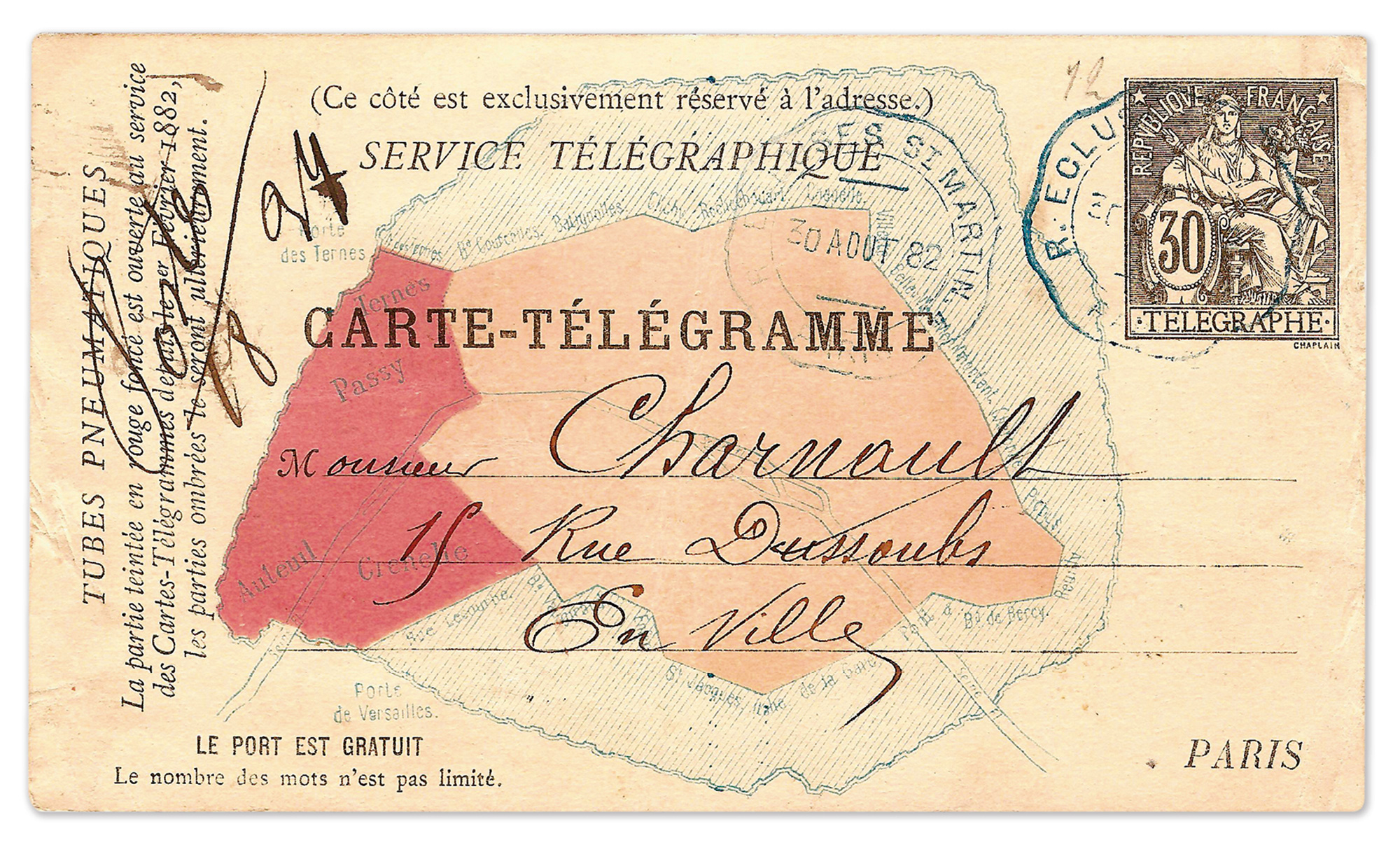Interfacing with the Subterranean
Paris’s pneumatic post
Molly Wright Steenson

Near the end of François Truffaut’s 1968 film Stolen Kisses, a heartbroken Antoine Doinel walks in the shadows alongside a post office in Paris. He passes by the slot for stamped mail, dropping a farewell letter to Madame Tabard into the slot marked PNEUMATIQUES. “I’m an impostor of the worst kind. I dreamed that a feeling might exist between us,” his voiceover says as his fingers release the letter into the mail slot. It slips into the post office. A hand picks it up, puts it on the desk. As Antoine says “Adieu,” another hand cancels the stamp on the envelope: bam, bam.
“Pneu. Ma. Tique,” says Antoine.
His letter is sealed in a brass canister and dropped into the pipes of the pneumatic post. With a hiss of air, the canister rattles through the rusty iron tubes on the ceiling of underground vaults. Blue street signs announce the avenues above. The pneumatic tubes loudly exhale the canister. The montage ends with Madame Tabard’s red-lacquered fingernails opening the letter.
• • •
Introduced to combat the shortcomings of the telegraphic network in Paris, the subterranean Poste Pneumatique (Pneumatic Post) moved physical messages under the streets of Paris from 1866 until 1984. Its network lined the interior of the vaulted grand sewers built during Baron Haussmann’s regime during the Second Empire (1852–1870) and delivered physical messages across the city and to the suburbs faster and more reliably than the telegraph. What first began in 1866 as a private one-kilometer line between Paris’s stock exchange and central telegraph office expanded to six stations and was made available for public use in 1879. By 1907, it reached all arrondissements and nearby suburbs, contained 210 kilometers of underground tubes, and annually handled approximately nine million “postal telegrams,” so-called because they were treated with the urgency of a telegram and handled administratively by the telegraph division of the postal service (the two agencies had merged in 1878 ). At its height in 1945, the Parisian pneumatic tube network was the largest in the world, encompassing 450 kilometers and processing twelve million objects.[1] It began to decline through the 1960s and closed in 1984, thanks to reliable telephone and, later, telefax services.
But Paris was not the first city to employ pneumatic tubes in this way. First implemented in London in 1853, the technology quickly spread. Berlin began its Rohrpost in 1865, Vienna in 1867, and Marseilles in 1894, followed by most other major European cities. Brazil, Argentina, and Australia introduced tubes not long after. Philadelphia and New York implemented pneumatic tube service for first-class letters in 1893 and 1897, respectively, and a pneumatic tube line ran over the Brooklyn Bridge. Urban pneumatic tube installations existed for a surprisingly long time, remaining in operation until 1953 in New York and even 2002 in Prague (where the system was taken out of service only after a flood destroyed much of the tube infrastructure). They have also long operated as internal conduits for paper and other material in post offices, department stores, and warehouses, and are still manufactured and used for this purpose today in hospitals, banks, stores, and libraries. (In fact, in a particularly serendipitous moment, some of the research requests for this very article traveled by pneumatic tube in the New York Public Library.)